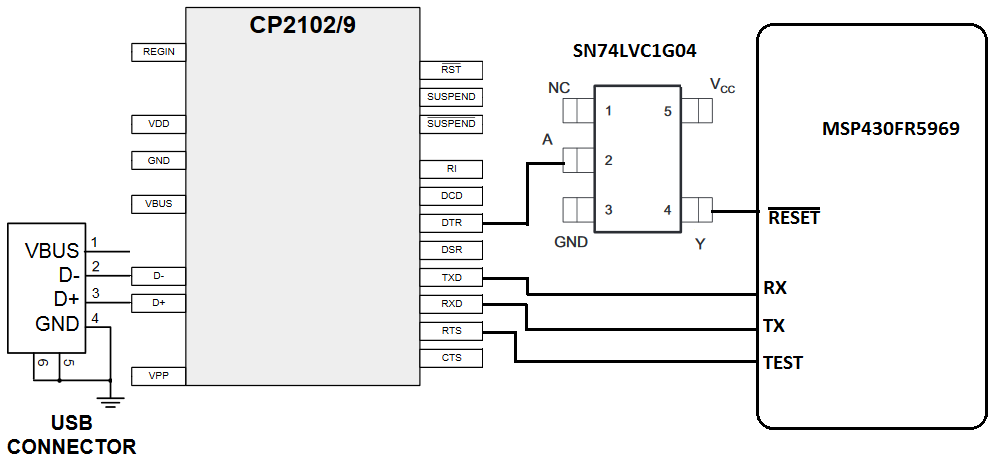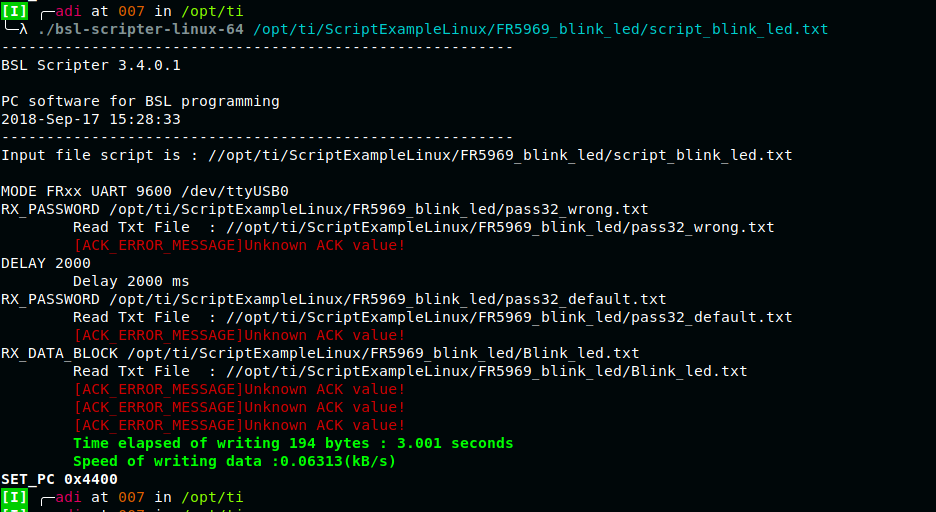Other Parts Discussed in Thread: MSP-FET
Hi all,
I am designing a custom PCB employing a MSP430FR5969, being programmed using CP2102 in a similar fashion after referring to this blog;

and

and

after going through above links I have developed the following schematic ;
Q1. Is the schematic correct?
Q2. Is connection of DTR (of CP2102) needs to inverted and then connected to RESET of MSP430FR5969?
Q3. Do I need to take care of any other precaution?
Thanks and regards






